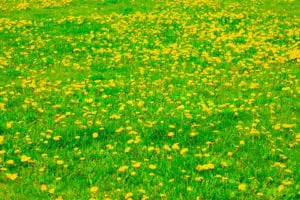
With a thick blanket of snow covering much of central Indiana, most homeowner's are not thinking about their lawns. And that's OK. But in another month or so, temps will rise and snow will melt and your lawn will begin to wake from its long winter nap.
Dormant, not dead.
Many people think that grass dies each year during the winter, but it's not dead...it's dormant. It goes into hibernation and rides out the winter until favorable growing conditions return. Turf grass begins to wake up with ground temperatures just above freezing. As days become longer and grass gets more sunlight, your grass begins to wake up. The roots are the first to wake up, searching for nutrients to begin the push upward.
Spring green-up.
Cool-season grasses, such as blue grass and tall fescue, begin growing when temperatures reach at least 40 degrees F and grow best between 60 and 70 degrees F. This is when we balance fertilization with weed prevention. We don't want to starve the lawn, but we don't want to over feed it either. Providing too much fertilizer can promote top-growth, but the roots don't keep pace. And we also want to time the pre-emergent fertilization just right so that we hit just before weeds are likely to start. Fertilize too early and we miss the weeds of late spring. Fertilize too late and we miss the early-risers.
Timing is everything.
If your lawn is the furthest from your mind, it's understandable. But don't let it stay there. Getting your lawn on a program sooner is better. We only start treating lawns when we know the applications will work best, and if you wait until April or later to begin your lawn care program you may have missed a crucial application or two! For a free estimate, please use our online form.
